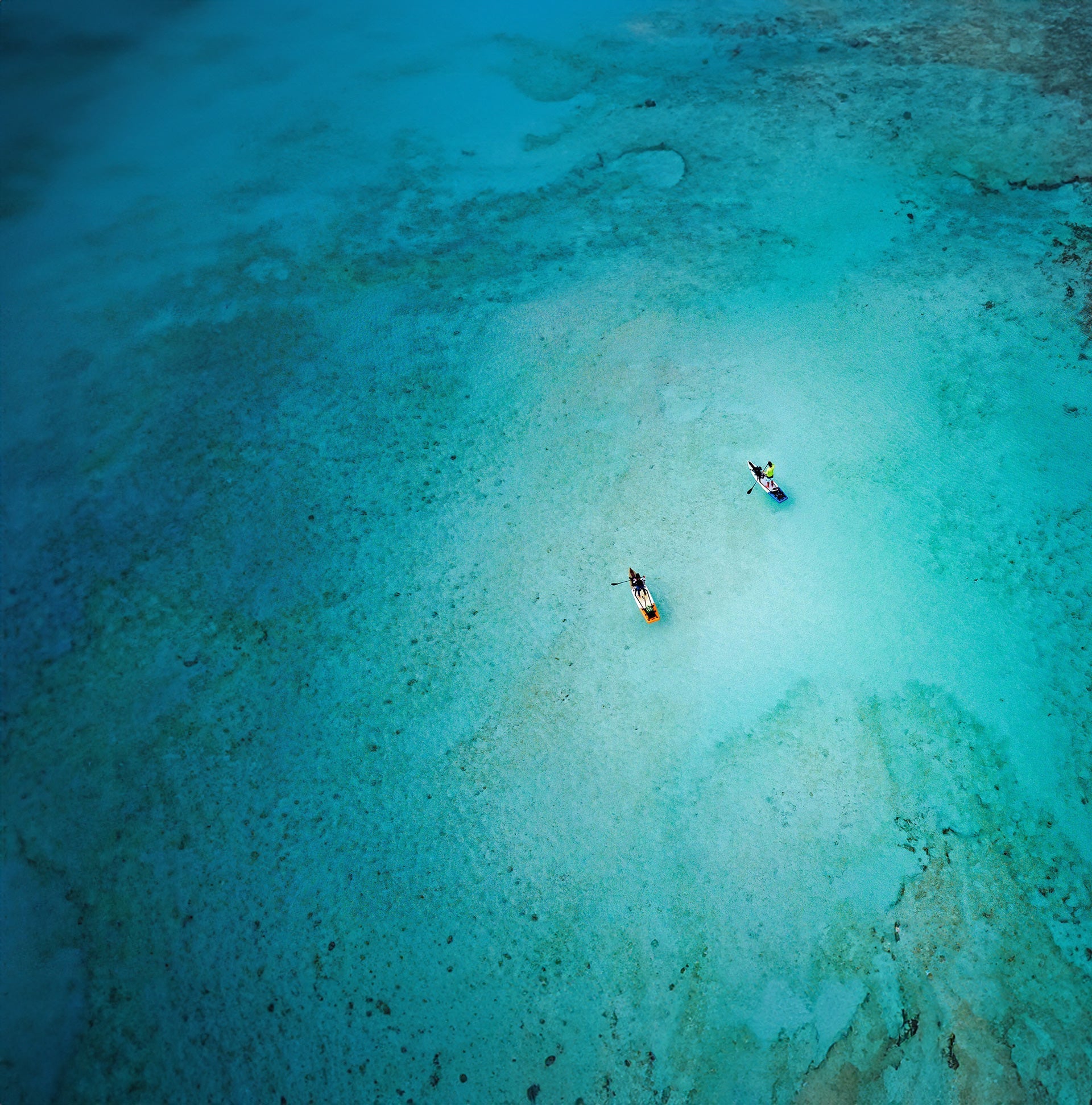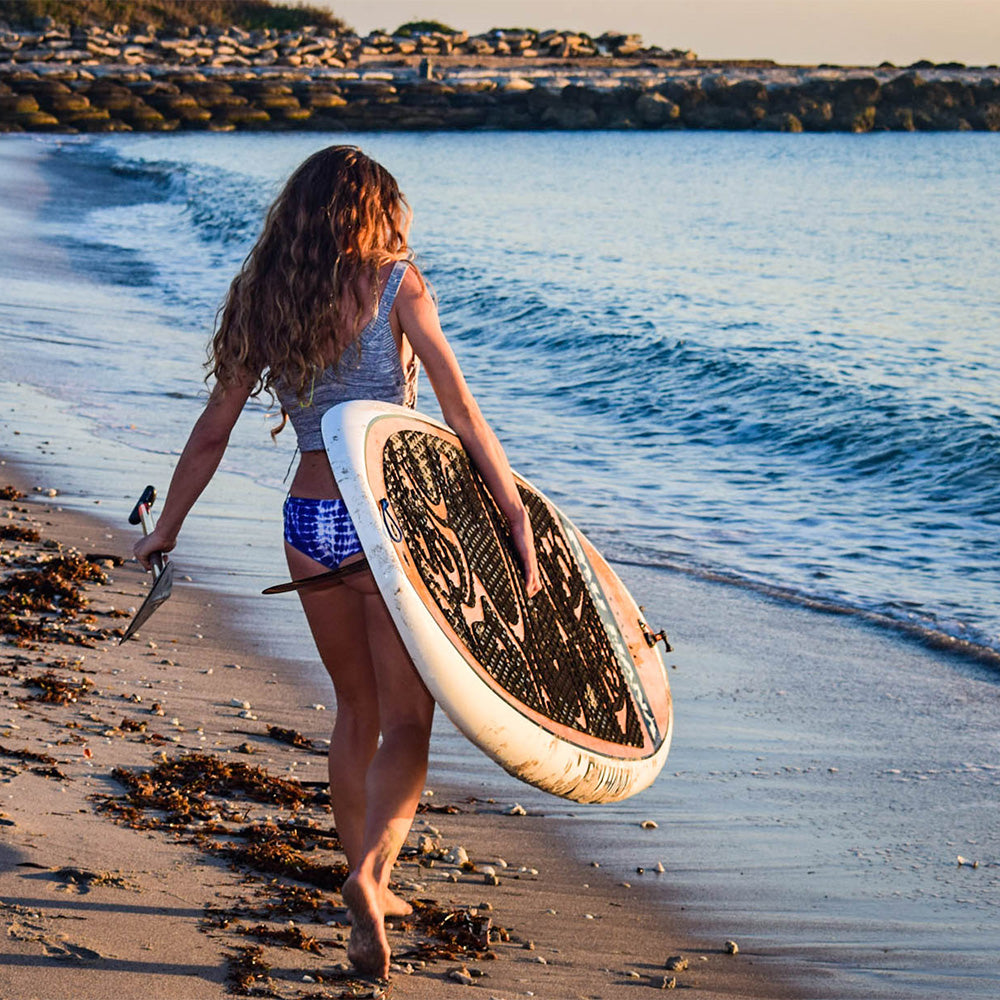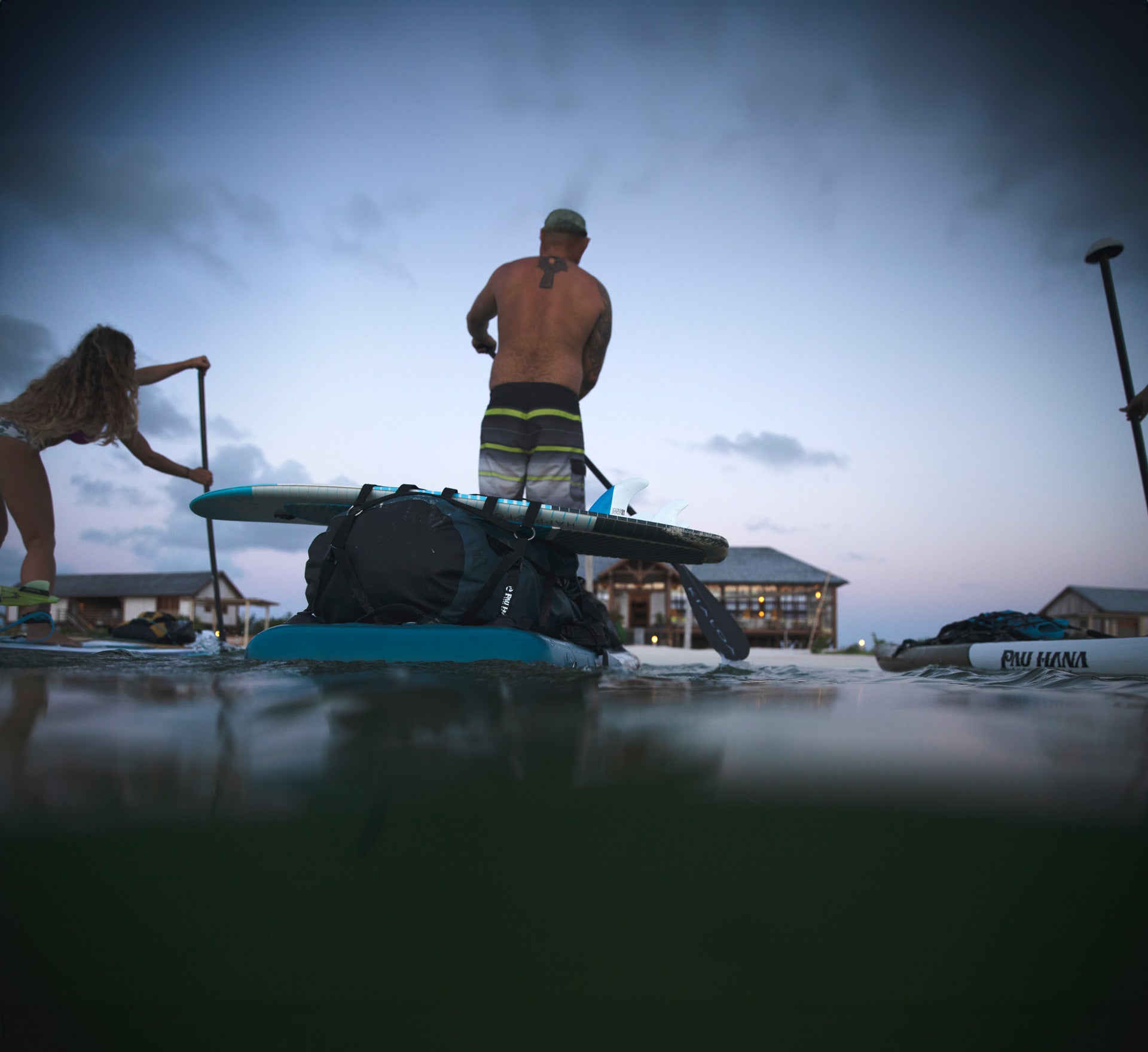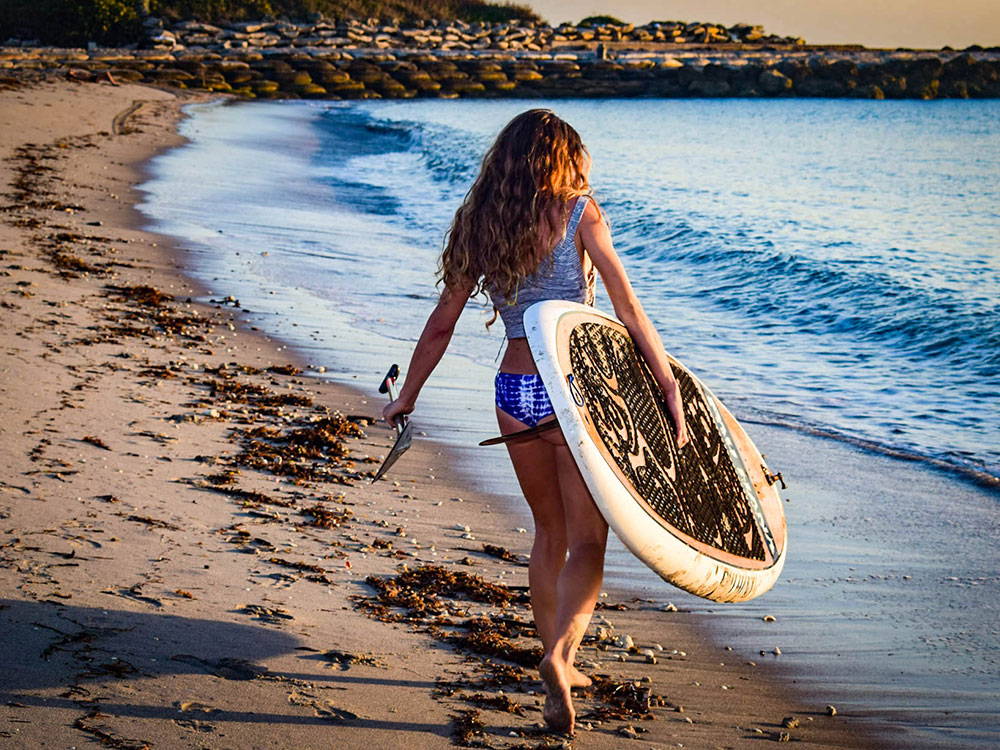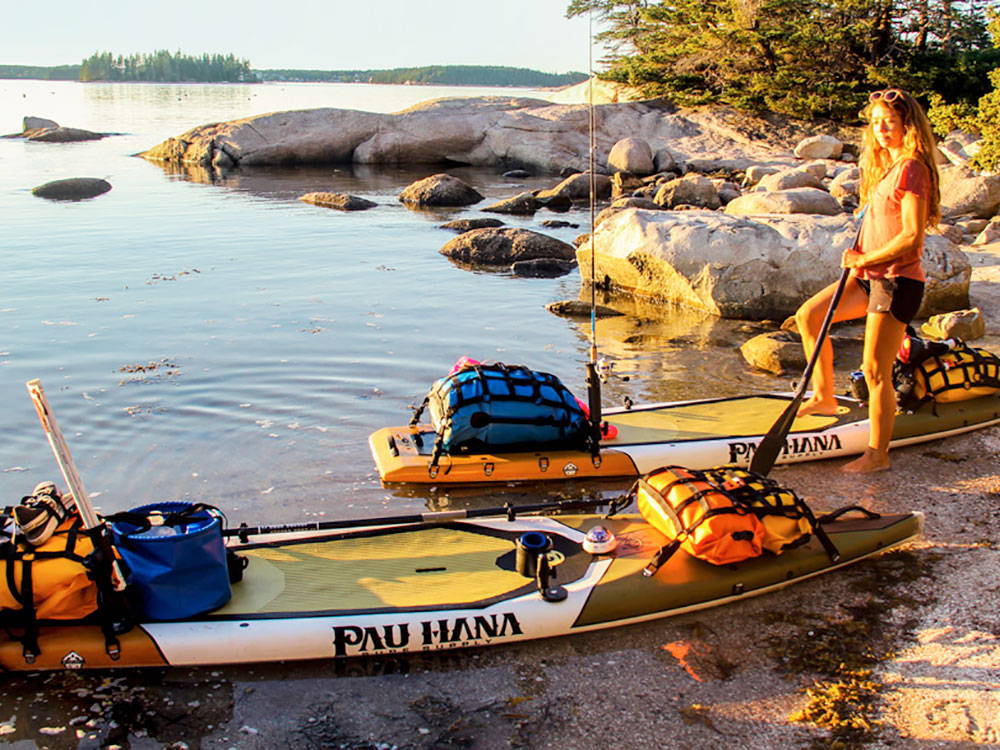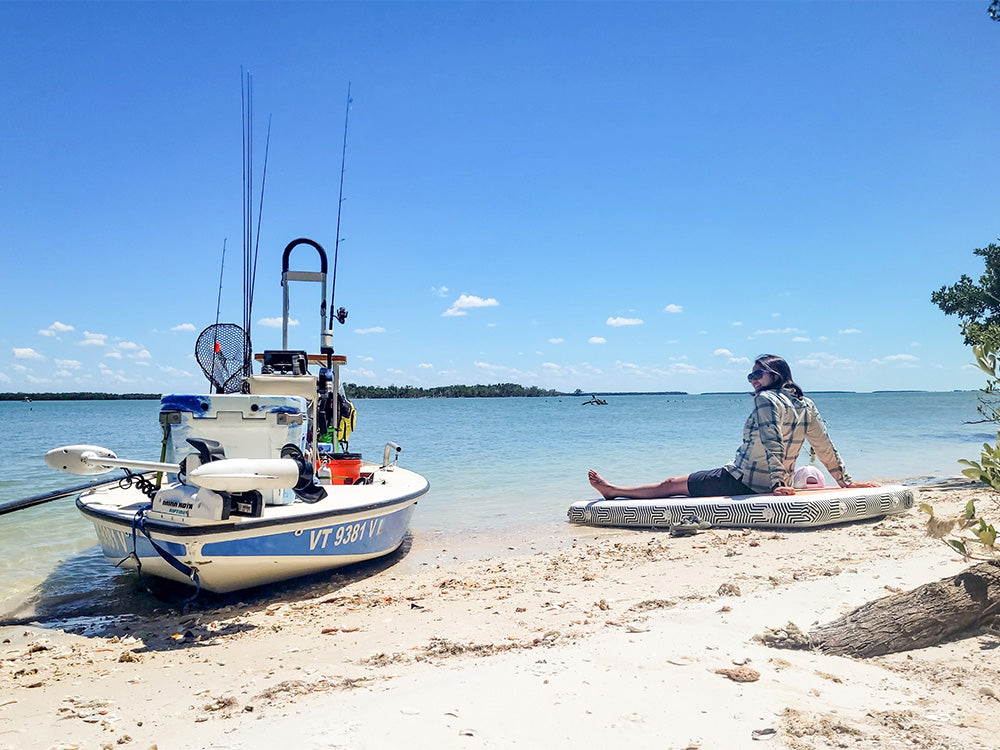The team at Pau Hana have compiled these helpful tips for buying your first paddle board.
There’s really never been a better time to get into stand up paddle boarding. Not only is it one of the fastest growing sports but the level of quality equipment on the market is at an all time high. There are so many brands and products to choose from which can make the process of buying your first paddle board seemingly difficult. We have compiled our top 5 tips to help you on your way.
1. Paddle Board Construction
The first thing you’ll want to consider when buying your first paddle board is the type of construction. There are inflatable boards and rigid or hard boards. Inflatable boards are generally made from PVC and have a drop stitch core technology that, when inflated correctly, forms a fairly solid platform with relatively little flex. When deflated they pack up into a travel bag and therefore can be really hand if you are limited on space or don’t own a roof rack. Hardboards are usually made from a epoxy construction and are therefore more prone to damage if paddling on rocky or shallow rivers. We would recommend a hard board if you paddle local and have the storage space to keep one and we would recommend an inflatable for those looking for a more durable board that you can take away on holidays.
TRADITIONAL EPOXY CONSTRUCTION

RICOCHET EXTRA DURABLE CONSTRUCTION

PLASTIC MOULD CONSTRUCTION

INFLATABLE DROP STITCH CONSTRUCTION

2. Paddle Board Shape and Size
There are two types of hulls on paddle boards; planing and displacement. Planing hulls are rounded and lay flat on the water. These are better beginner and all around boards, as they tend to be more stable. Displacement hulls form a point to the front of the board and cut into the water in a V shape. These are designed to cut through the water are seen on racing and touring boards where efficiency and speed are key.
When buying a paddle board scope out the size and weight specifications of each board. The wider the board, the more stable it is going to be. Also the more volume the board has the more buoyant it is going to be – check the recommended rider weight and make sure you fall within the recommended weights for that board.
The perfect beginner boards will be around 10-12 foot long and around 32 inches wide.
3. Paddle Board Type
Consider what you want to achieve out of owning a paddle board. There are many different shapes and styles on the market that lend themselves to different uses. You will find boards that are designed for multi-day tour paddling, surfing, whitewater, racing and more. For your first SUP we suggest looking at an all around board that provides a good stable platform for developing your skills on. However if you know that ultimately you want to start multi day paddling the you can look at getting an entry level touring board that you will be able to learn on and take on your first expedition. The Pau Hana 11’6 Malibu Tour is a great board to start on for the aspiring multi day paddlers. The Pau Hana 10’0 Oahu board is an excellent all-around board that will not only help you progress fast but is also capable of surfing waves and is stable enough for yoga practice so you can carry on developing skills without needing to purchase another board.
4. Where To Buy A SUP
The Internet is a great resource for browsing all the available SUPs on the market. You’ll be able to compile a list of boards that suit your needs and match your weight requirements. Once you have condensed a list to a few paddleboards that fit your needs, we would recommend finding a local dealer that have the boards in stock. REI, for instance, stock a wide variety of boards and are well equipped with in depth knowledge on all of their products. You’ll be able to ask store staff any burning questions you have and they should be able to give you there personal, non-biased, opinions on which board will be best suited for you. You can also ask them about the manufactures warranty and their own store policy’s when it comes to purchasing a board. Also at Pau Hana we have a dedicated team to help you through the buying process. If you have any questions about any of our products or need any advise you can contact our team here.
5. Storing Your New SUP
One last thing to consider is where to store your new paddle board. Epoxy paddle boards are not designed to be left in the sun or heat and are best stored in a garage or indoors. Inflatables are less of a concern as they pack away small so you don’t require the same amount of space to store them. If you opt for a hard board we recommend you buy a paddle board bag and store you SUP in one. A bag will help prevent any heat damage and offer protection against scratches and surface dings.
You can read our full article on board care HERE.
Let us know if you have any other questions about buying your first paddle board in the comments below.

BY JEN CHRIMES
Jen Chrimes is a marketing and design professional that has worked with the outdoor industry for over 9 years. She is also a professional kayaker and avid outdoor enthusiast who loves sharing her knowledge and passion through her work. You can find more about Jen and her work at sitezed.ca



